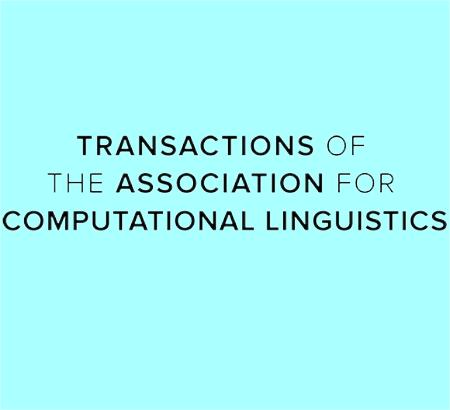Unifying Structured Data as Graph for Data-to-Text Pre-Training
IF 4.2
1区 计算机科学
Q2 COMPUTER SCIENCE, ARTIFICIAL INTELLIGENCE
Transactions of the Association for Computational Linguistics
Pub Date : 2024-01-02
DOI:10.1162/tacl_a_00641
引用次数: 1
Abstract
Abstract Data-to-text (D2T) generation aims to transform structured data into natural language text. Data-to-text pre-training has proved to be powerful in enhancing D2T generation and yields impressive performance. However, previous pre-training methods either oversimplified structured data into a sequence without considering input structures or designed training objectives tailored for a specific data structure (e.g., table or knowledge graph). In this paper, we unify different types of structured data (i.e., table, key-value data, knowledge graph) into the graph format and cast different D2T generation tasks as graph-to-text generation. To effectively exploit the structural information of the input graph, we propose a structure-enhanced pre-training method for D2T generation by designing a structure-enhanced Transformer. Concretely, we devise a position matrix for the Transformer, encoding relative positional information of connected nodes in the input graph. In addition, we propose a new attention matrix to incorporate graph structures into the original Transformer by taking the available explicit connectivity structure into account. Extensive experiments on six benchmark datasets show the effectiveness of our model. Our source codes are available at https://github.com/AlibabaResearch/DAMO-ConvAI/tree/main/unid2t.将结构化数据统一为图表,进行数据到文本的预训练
摘要 数据到文本(D2T)生成旨在将结构化数据转换为自然语言文本。事实证明,数据到文本的预训练能有效提高 D2T 生成能力,并产生令人印象深刻的性能。然而,以往的预训练方法要么是将结构化数据过度简化为序列而不考虑输入结构,要么是为特定数据结构(如表格或知识图谱)量身定制训练目标。在本文中,我们将不同类型的结构化数据(如表格、键值数据、知识图谱)统一为图格式,并将不同的 D2T 生成任务转换为图到文本的生成。为了有效利用输入图的结构信息,我们通过设计结构增强变换器(structure-enhanced Transformer),为 D2T 生成提出了一种结构增强预训练方法。具体来说,我们为变换器设计了一个位置矩阵,编码输入图中连接节点的相对位置信息。此外,我们还提出了一种新的注意力矩阵,通过考虑可用的显式连接结构,将图结构纳入原始变换器。在六个基准数据集上进行的广泛实验表明了我们模型的有效性。我们的源代码可在 https://github.com/AlibabaResearch/DAMO-ConvAI/tree/main/unid2t 上获取。
本文章由计算机程序翻译,如有差异,请以英文原文为准。
求助全文
约1分钟内获得全文
求助全文
来源期刊
CiteScore
32.60
自引率
4.60%
发文量
58
审稿时长
8 weeks
期刊介绍:
The highly regarded quarterly journal Computational Linguistics has a companion journal called Transactions of the Association for Computational Linguistics. This open access journal publishes articles in all areas of natural language processing and is an important resource for academic and industry computational linguists, natural language processing experts, artificial intelligence and machine learning investigators, cognitive scientists, speech specialists, as well as linguists and philosophers. The journal disseminates work of vital relevance to these professionals on an annual basis.

 求助内容:
求助内容: 应助结果提醒方式:
应助结果提醒方式:


